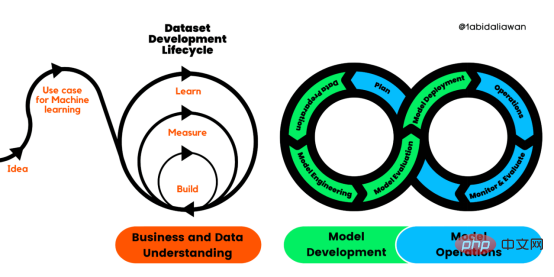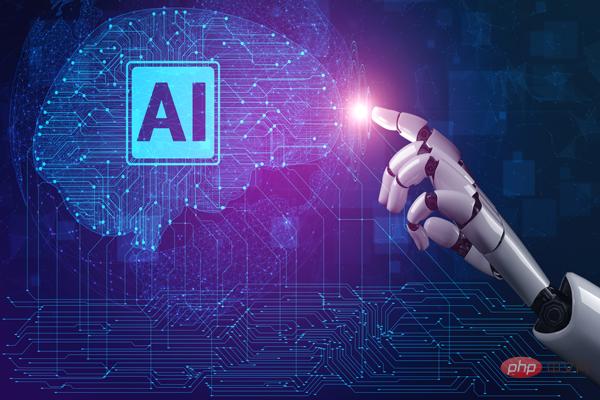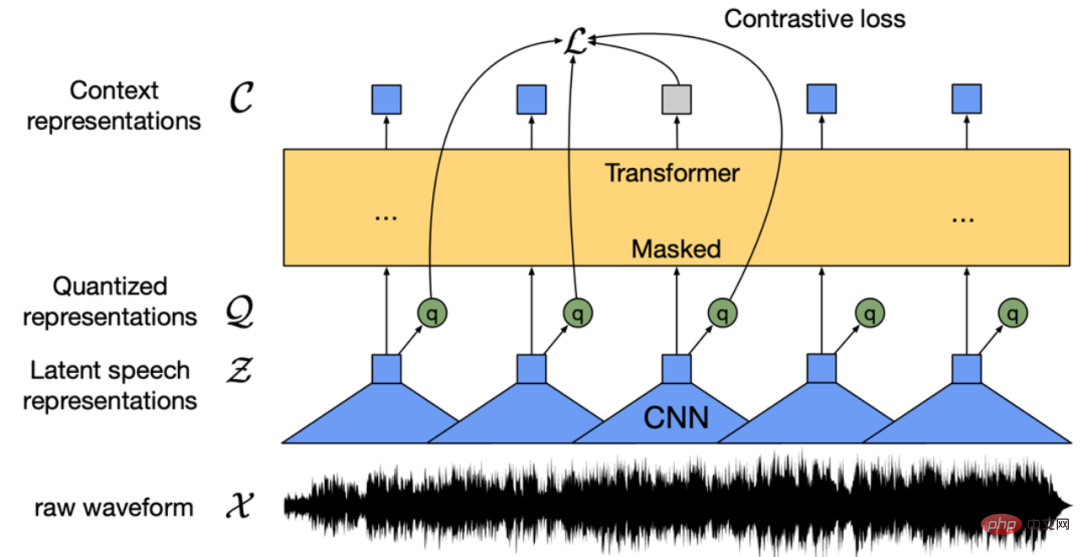For vehicles at different levels, the amount of data that needs to be collected also increases exponentially. Taking the currently common L3 stage as an example, with the introduction of 4K ultra-high-definition cameras, 128-line lidar and other sensors, the amount of data recorded by the data collection system for 8 hours a day is as high as 30TB. Let’s put it this way, Nvidia’s self-driving technology tests also show that the vehicle learning data collection system can fill a terabyte-level solid-state storage drive (SSD) in a few hours.

As we all know, there are five levels of automotive automation. The greater the degree of automation, the greater the amount of data storage required. For example, Level 2 autonomous vehicles require full human operation, but have additional automated systems such as lane change assistance, blind spot detection or automatic parking functions. Bowman believes that level 2 autonomous vehicles will require 4 to 10 petabytes of data.

However, level three autonomous vehicles require 50 to 100PB of data storage, and level five autonomous vehicles require more than 3EB of storage space. "Level 3 means the car can drive itself," Bowman said. "Level 5 means the car can drive itself." "Level 5 means the car can drive completely autonomously," Bowman said.
What to do with all the data?
While the amount of data storage required for self-driving cars is enormous, the challenge does not stem from the storage phase, but the transmission phase. For example, Bowman said, getting the vehicle on the road to record data from Each vehicle can generate 80 terabytes of data per day when collecting data from cameras, laser scanners and radars.
He said: “Then you have to connect the vehicles via data lines to get the data from The vehicle systems are transmitted to the data center, where the data is then copied from the R&D center to the data center. Typically, our customers have a centralized database in each continent, and data transfer can be achieved through accelerated file transfer methods or physical means."
Introducing some specific research on data management :
Resource management and task offloading
Since edge nodes can provide services to multiple users (vehicles) within a certain range at the same time, Resource allocation and user task competition issues are the main factors affecting performance. A certain document transformed the competition conflict problem in the vehicle task offloading process into a multi-user game problem, proved the existence of the Nash equilibrium of the problem, and implemented a distributed Computational offloading algorithm.
Further to the above literature, optimization analysis is carried out on the three aspects of communication rate, reliability and delay in the task offloading process, and a wireless wireless network that supports service quality awareness is proposed. The network resource management framework splits the resource allocation problem into three sub-problems: vehicle cluster segmentation, resource block pool allocation between clusters, and resource allocation within the cluster, and implements an optimization method based on graph theory:
- First convert vehicle partitioning into a cluster partitioning problem, so that collaborative control between vehicles can avoid hidden terminal problems and avoid communication restrictions caused by half-duplex;
- The resource block pool allocation problem for the group is transformed into a max-min fairness problem based on a weighted resource conflict graph to solve the problem of spectrum utilization enhancement (caused by efficient inter-cluster communication resource reuse) and Trade-offs to limit competition conflicts between clusters.
In view of the problem of frequent edge node switching caused by high mobility of vehicles, the above literature believes that the connection between vehicles and nodes needs to be maintained longer. If it is lost after a short period of time, it will cause an increase in processing time and energy consumption. A task replacement algorithm is proposed. According to the calculated replacement time, the processing task is offloaded from the original node to the next feasible target node and the task continues to run.
At the same time, the researcher is not limited to a single complete task offloading, but implements a partial offloading strategy for a series of tasks.
For the entire In terms of the offloading process, both the performance of the vehicle terminal and the edge service node terminal need to be taken seriously. The DDORV algorithm can couple the vehicle terminal and the node terminal based on the current system conditions (such as channel quality, traffic load) and contain a large amount of status information. Stochastic optimization problems with control variables are considered simultaneously.
Specifically, this algorithm decouples the bilateral stochastic optimization problem into two independent frame-wise optimization problems based on the Lyapunov algorithm: For vehicles, the offloading strategy is selected by comparing the local processing cost with the task offloading cost, CPU The adjustment frequency is calculated through the proposed objective function; for the edge node, a lightweight resource supply algorithm is first proposed, and then based on an iterative algorithm that jointly optimizes wireless resources and energy consumption, a continuous relaxation method and a Lagrange dual solution are proposed coupling algorithm.
At the same time, the researcher chose TV white space for wireless data transmission between vehicles and edge nodes, making up for the limitations of traditional cellular, Wi-Fi and other technologies. disadvantages and improves communication efficiency.
At the same time, for multiple users in a certain area, there are usually multiple nodes to provide choices. The JSCO algorithm transforms the load balancing and task offloading decision-making problem in a multi-node, multi-user context into a mixed integer nonlinear programming problem, and can calculate with low complexity the three issues of node selection, computing resource optimization, and offloading plan decision-making. Maximize system utilization while maintaining latency constraints.
The importance of 5G infrastructure to data
Some professionals say that 5G is crucial to the development and production of autonomous vehicles. Especially in the next 5 to 10 years, more technologies will be integrated into cars. He said: "Today's cars are mobile data centers on the road. Therefore, the data in the vehicle must be pre-processed, for example, to identify valuable data worthy of transmission to the data center via 5G."
He also said that self-driving cars need to store edge data, that is, store data in the car. "You need compute edge storage, especially in places where there's no 5G coverage. That's another problem because you have to cache the data in the vehicle to send it once there's a 5G signal."
Another issue related to 5G is upload speeds. Some professionals said: "5G is designed for high-speed download streaming data, so the upload speed is not that fast. Therefore, you cannot really upload a large amount of data through 5G. It is designed for transmitting data from the data center to the end user rather than from the vehicle." It is designed to reach data centers. But the advantage of 5G is its low latency."
Challenges faced
The Cyberspace Administration of China issued the "Several Provisions on Automotive Data Security Management (Draft for Comments)" on May 12 last year "(referred to as "Opinion Draft") caused a small fluctuation, but it seemed to have quickly sunk into the "bottom of the pond" and was overshadowed by the excitement in the automotive industry such as cross-border car manufacturing. But automobile companies know very well that this is not only a data security risk control plan brought about by the Tesla controversy. On a deeper level, the "curse" warning of collecting user data has been sounded. "If this regulation is finally implemented and strictly stipulates that data can only be left in the car, and car companies do not activate new legal data acquisition channels, then the development of domestic autonomous driving technology may really be delayed for several years," said a certain An industry authority said on condition of anonymity.
But not all car companies choose to wait and see. User driving data on real roads is an important support for car companies to iteratively upgrade and improve their autonomous driving technology. To this end, some companies have begun to create new business models for data acquisition. In April this year, SAIC Zhiji released the mining method of user digital assets "rough stone" based on its CSOP (Cus-tomerShareOptionPlan) user data rights platform. It hopes to realize data transactions with users through this platform. The specific operation method is: Zhiji Automobile used 4.9% of the founding round equity for the CSOP plan and launched 300 million "raw stones", of which 70% of the rough stones need to be redeemed by car owners through the data generated by daily driving vehicles. After users obtain the rough stones, they can upgrade software and hardware products and obtain corresponding data rights.
Zhiji is currently the only car company in China that proposes data transactions with users. Although its platform was launched before the release of the draft of new regulations, it is considered to be a regulatory trend. A solution from Yanxia. "I think it's quite interesting. It's a model innovation." Liu Jianhao, head of Baidu Apollo information security, told a reporter from the Economic Observer. The above-mentioned authorities also believe that this model is groundbreaking. Prior to this, car companies collected most vehicle data by default, and equal transactions were never achieved. However, some experts believe that due to the many uncertainties, this model may be just an attempt under the Internet thinking of car companies, and it is difficult to say whether the implementation will be smooth or not.

Behind the discussion of Zhiji Auto’s data trading model, it reflects the crisis that it will become increasingly difficult for car companies and the industry to collect user data for smart cars. feel. According to the "Opinion Draft", car companies "do not collect user personal information and important driving data by default", or at least need to obtain user consent every time. This means that the data collection channel may be blocked, which will inevitably have an impact on the current booming autonomous driving applications.
Under this circumstance, can SAIC Zhiji’s data trading model become an industry trend? Between the needs of user data security and the development of intelligent driving technology, are there other feasible data sharing models? Time is running out for the industry to find solutions.
Car companies’ big data “cut-off” risks
In interviews with reporters from the Economic Observer, many experts expressed their opinions on the relationship between Zhiji Auto and The mode of data transactions by users has been given certain recognition. Mei Songlin, a senior analyst in the automotive industry, believes that this model can enhance the transparency of data collection by car companies and allow car companies and users to benefit from each other. Lu Wenliang, general manager of CCID Consulting Automotive Industry Research Center, said that this shows that car companies are beginning to adopt a "crowdsourcing" model similar to that of Internet companies, which is somewhat advanced.
But the industry has different views on whether this model will become an industry trend. "I think in the future, companies (like Zhiji) may come up with some good ways to stimulate users to provide data." Liu Jianhao believes that adopting this model can not only help car companies obtain data, but also through the accumulation of data It will greatly promote the development of smart cars. "Data is a basic element in the mobile Internet era and is crucial. The same is true for smart cars." Liu Jianhao said. Liu Jianhao made an analogy with the development of the mobile phone industry, "(Before) Nokia itself had little data. As the content of smartphone applications increased, it directly ushered in a mobile Internet era." Liu Jianhao said.
However, some people believe that there are still many uncertainties in the data trading model. On the one hand, because it is a new model, it is difficult to set the amount of data transactions and rewards. "If the setting is low, no one will participate. If the setting is high, it will not be cashed out later, which will damage the brand." Lu Wenliang said. At the same time, in response to the view that data may promote the overall development of smart cars, Lu Wenliang believes that to use the "crowdsourcing" model to achieve development, the product should first be relatively good before it can use user data to form a virtuous cycle. In the case of semi-finished products, it will cause A vicious cycle, and the current smart cars cannot be said to have been developed and perfected. Therefore, it is hard to say whether this new data acquisition model represented by Zhiji Automobile will become a trend. "It is probably just an attempt by car companies under the Internet thinking. Internet There are many operating models. Try them all. If they don’t work, you can change them.” anxiety. "Now car companies are having a headache with the latest data collection requirements. Regarding this draft, most of the feedback from companies focuses on changes in data collection methods." Lu Wenliang pointed out to a reporter from the Economic Observer that if the new regulations are implemented, It will definitely have a big impact. "The main reason is that too much data was collected in the past, and the business model of many companies is to collect data without authorization."
You can see The new regulations on automobile data security management mainly restrict the collection of two types of data - important data and personal information. The important data includes "vehicle types, vehicle traffic and other data on the road", which is considered to be important data required for autonomous driving to collect road scenes. In addition, personal in-car operations in personal information are also considered an important channel for car companies to collect user habits. However, the new regulations determine that this information is "not collected by default" and even if it is collected, the authorization is "valid only once", which may block the current data collection channels of car companies.
The black box of intelligent driving - Huawei data management method
Huawei officially released the "Huawei Core Network Autonomous Driving Network White Paper", taking the lead in the industry The concept, goals and architecture of the 5G-oriented core network autonomous driving network are proposed, providing a measurable and practical guiding path for the evolution of the 5G core network to the autonomous driving network.
In recent years, smart driving cars have become a new development trend in the automotive field. More and more cars have adopted assisted driving systems (ADAS) and autonomous driving systems. Such systems use vehicle-mounted mobile data centers ( MDC) and vehicle-mounted sensors can intelligently detect obstacles, sense the surrounding environment and automatically decide the vehicle's path and control the vehicle's driving status during driving. Intelligent driving technology has brought revolutionary opportunities and challenges to the automotive field. More and more manufacturers are committed to improving the driver's experience in driving through intelligent driving.
In addition, the safety of smart driving cars has also attracted widespread attention in the industry. Traditional human-driving cars usually use black box equipment to record the vehicle’s engine speed and vehicle speed before and after an accident. , brakes, accelerator and seat belt status, while the black box is a type of equipment installed on the car and has high damage resistance. When a car has a violent collision, the black box can use the data provided by the acceleration sensor connected to the black box device in the car body to determine whether the vehicle's acceleration exceeds the preset threshold in a short period of time, and then collect and store body data.
However, compared with traditional human-driven vehicles, smart-driving cars have different limitations in application scenarios, driver driving habits and styles, how each system in the smart-driving car works, and how they interact with surrounding facilities. The relationship with cars has undergone tremendous changes. The safety of smart driving cars has also put forward higher requirements for black box data management methods. Therefore, how to provide a more effective black box management suitable for smart driving cars? Methods become technical problems that need to be solved.
In order to solve this problem, Huawei applied for an invention patent titled "Management Methods, Devices and Equipment for Black Box Data in Intelligent Driving Cars" on August 7, 2019. (Application number: 201910726567.X), the applicant is Huawei Technologies Co., Ltd.
Based on the currently disclosed information of this patent, let us take a look at this black box data management method.

As shown in the figure above, it is a schematic diagram of the logical architecture of the black box data management system of the smart driving vehicle invented by this patent. The system includes a cloud data center 101 , the network 102 and the intelligent driving vehicle 103, the cloud data center 101 and the intelligent driving vehicle 103 communicate through the network 102.
Among them, the cloud service data center can provide cloud service data centers for storing black box data, including private cloud, public cloud and hybrid cloud type data centers; the network can be implemented A medium for transmitting black box data in smart driving cars to cloud service data centers.
Looking at the entire intelligent driving vehicle, it includes communication box 1031, central gateway 1032, body controller (BCM) 1033, human-computer interaction controller 1034, and intelligent driving controller 1035 , vehicle controller 1036 and black box device 1037. The communication box is used to realize communication between smart driving vehicles and cloud service data centers; human-computer interaction controllers include in-vehicle entertainment control systems such as in-vehicle entertainment (IVI) and hardware monitor interfaces (HMI), which are responsible for the interaction between people and vehicles. They are usually used It is used to manage instruments, central control displays, steering wheel pressure sensors and other equipment.
The vehicle controller (VCU) is usually connected to the chassis electronic control unit, airbag and power electronic control unit, and the airbag is usually connected to the inertial measurement unit, through the inertial measurement unit Detection can determine whether the smart driving car is in an emergency braking state. If the smart driving car is in this state, the airbag can pop up to protect the driver's safety.
Finally, there is the most mysterious black box in the vehicle. The black box device is used to record the body data of the smart driving vehicle in emergency situations. These data include: engine speed, vehicle speed, and braking strength. , steering angle, throttle plate status, seat belt status, etc., as well as the timestamp when these data are generated. When a car crashes, this data is often the most important data for investigators to analyze the accident.
Next, we will introduce in detail the management method of black box data in smart driving cars provided in the patent in conjunction with the figure below, as shown in the figure.

First, when the detection controller detects a black box trigger event, the detection controller sends a trigger event notification to the black box device. Secondly, the black box device identifies the data type of the black box data according to the trigger event type. The black box trigger events that the detection controller can detect include driving mode conversion events and driving risk boundary events. Among them, the driving mode conversion events can be subdivided into the following two types: Situation:
1) The driver switches the driving mode of the smart driving car to the smart driving mode: When the smart driving car is manually driven and the smart driving system detects that it meets the smart driving turning on conditions, The driver is notified through the human-computer interaction controller, and the driver triggers the smart driving car to switch to the smart driving mode through a button. At this time, the human-computer interaction controller notifies the black box device that there is a black box trigger event.
2) The driver actively switches the driving mode of the smart driving car to non-intelligent driving mode: When the smart driving car is in smart driving mode, the driver can press the brakes and turn the steering wheel , the human-computer interaction controller mode switching method actively switches the smart driving vehicle to non-driving mode. At this time, the black box data trigger event can be detected through the human-computer interaction controller, and the black box device is notified of the black box trigger event.
Then, the black box device determines the storage level to which the data belongs based on the trigger event type and data type, and stores the data according to the storage level to which the data belongs and preset rules. When the storage level to which the data belongs meets preset conditions, the black box device will send the black box data to the cloud service data center. In this way, by grading the storage method of data, the highest level will save the book to the cloud, thereby ensuring the security and effectiveness of the data.

The last is a schematic structural diagram of the black box device of this smart driving vehicle. It can be seen that the black box device includes a processor 101, a storage medium 102, Communication interface 103 and memory unit 104. Among them, the processor, storage medium, communication interface, and memory unit communicate through the bus.
The above is the black box data management method invented by Huawei. By upgrading the management method of the data in the black box, and storing the black box data in local and cloud storage at the same time, and for the black box The data is stored hierarchically, which effectively improves the effectiveness and security of the black box data in smart driving cars, and also improves the overall safety of the entire smart driving car.
Summary
- The higher the degree of automation, the greater the amount of data storage required;
- The challenge does not originate from the storage stage, but from the transmission stage;
- The data in the vehicle must be preprocessed, and valuable data must be transmitted through 5G first;
- "Several Provisions on Automobile Data Security Management" restricts the development of domestic autonomous driving. Driving data on real roads is an important support for the iterative upgrade and improvement of automakers' autonomous driving technology;
- Self-driving cars also place higher requirements on the management methods of black box data in terms of safety.
The above is the detailed content of Analyzing big data management in autonomous driving technology. For more information, please follow other related articles on the PHP Chinese website!
 解读CRISP-ML(Q):机器学习生命周期流程Apr 08, 2023 pm 01:21 PM
解读CRISP-ML(Q):机器学习生命周期流程Apr 08, 2023 pm 01:21 PM译者 | 布加迪审校 | 孙淑娟目前,没有用于构建和管理机器学习(ML)应用程序的标准实践。机器学习项目组织得不好,缺乏可重复性,而且从长远来看容易彻底失败。因此,我们需要一套流程来帮助自己在整个机器学习生命周期中保持质量、可持续性、稳健性和成本管理。图1. 机器学习开发生命周期流程使用质量保证方法开发机器学习应用程序的跨行业标准流程(CRISP-ML(Q))是CRISP-DM的升级版,以确保机器学习产品的质量。CRISP-ML(Q)有六个单独的阶段:1. 业务和数据理解2. 数据准备3. 模型
 人工智能的环境成本和承诺Apr 08, 2023 pm 04:31 PM
人工智能的环境成本和承诺Apr 08, 2023 pm 04:31 PM人工智能(AI)在流行文化和政治分析中经常以两种极端的形式出现。它要么代表着人类智慧与科技实力相结合的未来主义乌托邦的关键,要么是迈向反乌托邦式机器崛起的第一步。学者、企业家、甚至活动家在应用人工智能应对气候变化时都采用了同样的二元思维。科技行业对人工智能在创建一个新的技术乌托邦中所扮演的角色的单一关注,掩盖了人工智能可能加剧环境退化的方式,通常是直接伤害边缘人群的方式。为了在应对气候变化的过程中充分利用人工智能技术,同时承认其大量消耗能源,引领人工智能潮流的科技公司需要探索人工智能对环境影响的
 找不到中文语音预训练模型?中文版 Wav2vec 2.0和HuBERT来了Apr 08, 2023 pm 06:21 PM
找不到中文语音预训练模型?中文版 Wav2vec 2.0和HuBERT来了Apr 08, 2023 pm 06:21 PMWav2vec 2.0 [1],HuBERT [2] 和 WavLM [3] 等语音预训练模型,通过在多达上万小时的无标注语音数据(如 Libri-light )上的自监督学习,显著提升了自动语音识别(Automatic Speech Recognition, ASR),语音合成(Text-to-speech, TTS)和语音转换(Voice Conversation,VC)等语音下游任务的性能。然而这些模型都没有公开的中文版本,不便于应用在中文语音研究场景。 WenetSpeech [4] 是
 条形统计图用什么呈现数据Jan 20, 2021 pm 03:31 PM
条形统计图用什么呈现数据Jan 20, 2021 pm 03:31 PM条形统计图用“直条”呈现数据。条形统计图是用一个单位长度表示一定的数量,根据数量的多少画成长短不同的直条,然后把这些直条按一定的顺序排列起来;从条形统计图中很容易看出各种数量的多少。条形统计图分为:单式条形统计图和复式条形统计图,前者只表示1个项目的数据,后者可以同时表示多个项目的数据。
 自动驾驶车道线检测分类的虚拟-真实域适应方法Apr 08, 2023 pm 02:31 PM
自动驾驶车道线检测分类的虚拟-真实域适应方法Apr 08, 2023 pm 02:31 PMarXiv论文“Sim-to-Real Domain Adaptation for Lane Detection and Classification in Autonomous Driving“,2022年5月,加拿大滑铁卢大学的工作。虽然自主驾驶的监督检测和分类框架需要大型标注数据集,但光照真实模拟环境生成的合成数据推动的无监督域适应(UDA,Unsupervised Domain Adaptation)方法则是低成本、耗时更少的解决方案。本文提出对抗性鉴别和生成(adversarial d
 数据通信中的信道传输速率单位是bps,它表示什么Jan 18, 2021 pm 02:58 PM
数据通信中的信道传输速率单位是bps,它表示什么Jan 18, 2021 pm 02:58 PM数据通信中的信道传输速率单位是bps,它表示“位/秒”或“比特/秒”,即数据传输速率在数值上等于每秒钟传输构成数据代码的二进制比特数,也称“比特率”。比特率表示单位时间内传送比特的数目,用于衡量数字信息的传送速度;根据每帧图像存储时所占的比特数和传输比特率,可以计算数字图像信息传输的速度。
 数据分析方法有哪几种Dec 15, 2020 am 09:48 AM
数据分析方法有哪几种Dec 15, 2020 am 09:48 AM数据分析方法有4种,分别是:1、趋势分析,趋势分析一般用于核心指标的长期跟踪;2、象限分析,可依据数据的不同,将各个比较主体划分到四个象限中;3、对比分析,分为横向对比和纵向对比;4、交叉分析,主要作用就是从多个维度细分数据。
 聊一聊Python 实现数据的序列化操作Apr 12, 2023 am 09:31 AM
聊一聊Python 实现数据的序列化操作Apr 12, 2023 am 09:31 AM在日常开发中,对数据进行序列化和反序列化是常见的数据操作,Python提供了两个模块方便开发者实现数据的序列化操作,即 json 模块和 pickle 模块。这两个模块主要区别如下:json 是一个文本序列化格式,而 pickle 是一个二进制序列化格式;json 是我们可以直观阅读的,而 pickle 不可以;json 是可互操作的,在 Python 系统之外广泛使用,而 pickle 则是 Python 专用的;默认情况下,json 只能表示 Python 内置类型的子集,不能表示自定义的


Hot AI Tools

Undresser.AI Undress
AI-powered app for creating realistic nude photos

AI Clothes Remover
Online AI tool for removing clothes from photos.

Undress AI Tool
Undress images for free

Clothoff.io
AI clothes remover

AI Hentai Generator
Generate AI Hentai for free.

Hot Article

Hot Tools

Dreamweaver CS6
Visual web development tools

WebStorm Mac version
Useful JavaScript development tools

Zend Studio 13.0.1
Powerful PHP integrated development environment

SAP NetWeaver Server Adapter for Eclipse
Integrate Eclipse with SAP NetWeaver application server.

Safe Exam Browser
Safe Exam Browser is a secure browser environment for taking online exams securely. This software turns any computer into a secure workstation. It controls access to any utility and prevents students from using unauthorized resources.






